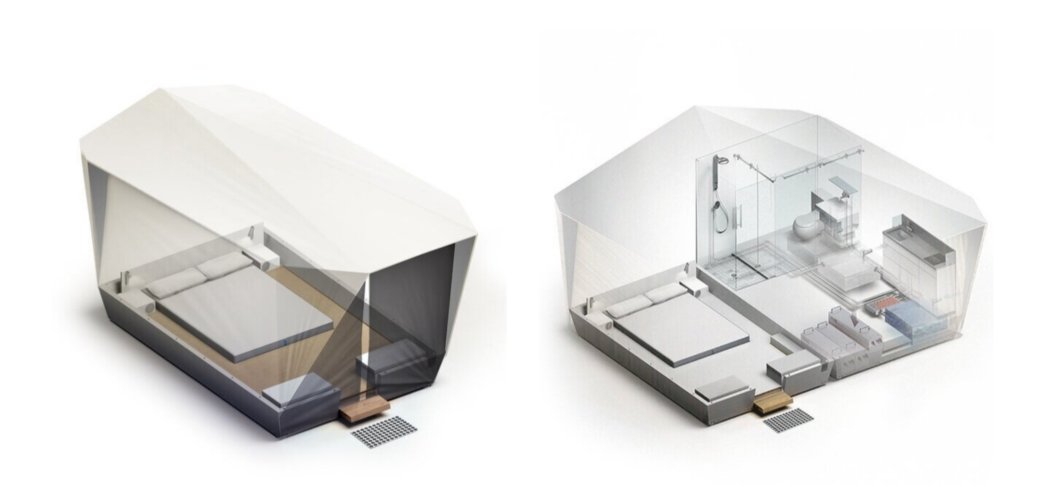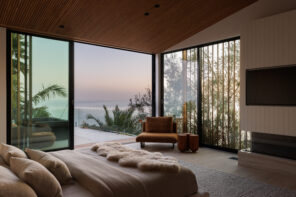Growing up, the term “seeing the world through rose colored lenses” came up often when referring to those who were dreamy or overly optimistic. While it later became more of an insult or a patronizing remark, seeing the world through a romantic lens couldn’t possibly be all that bad. The idiom itself first sprung up in the 1700s to mean cheerful or optimistic, and oddly, rose-tinted spectacles also became all the rage. Something about the rosy pink hue lent itself to a more intrinsic way of living that allowed one to abandon traditional views of the mundane.
There are so many aspects in our current condition that make us question optimism and life through a rose-colored lens at its core. However in times of severe crises, some see the gaping discrepancies from hospitals to homelessness and have decided to be proactive. From tech and design innovation, agricultural evolution, to cultural awakenings, this is the time of change and realizations. When the pandemic hit, it took hold of every single one of us. Stories of ventilator shortages, staggering death tolls, and fear permeated the news feeds with brute force causing in its stead a wave of anxiety and uncertainty. And while it occupies so much of our media and our time, some industries have figured out where they needed reform and that couldn’t have happened without the world being forced to press pause.
Below is a glimpse at design innovation deriving from COVID-19.
[separator type=”thin”]Surgeon Andrew Ibrihim discusses hospital reform post-coronavirus in his article in Fast Company:
For the past month I’ve been fighting against COVID-19 on two front lines.
The first has been in the hospital. I’m a surgeon, and though my background is in operations, I was recruited to provide intensive care to COVID-19 patients, like many of my fellow medical professionals. This new job has me placing central intravenous lines in patients, managing ventilators and, at times, performing emergency surgery. It has also required working with new teams, testing novel therapies, and adapting to new roles at a moment’s notice.
The other front line I’ve been working on is with my colleagues at the architecture and design firm HOK, as we work with healthcare leaders to figure out how to redesign medical facilities in the throes of a pandemic, and beyond. We are looking at how to repurpose existing facilities to meet the immediate coronavirus surge, but also thinking about the next decade of capital projects and how they should evolve. These are three key questions we’ve been fielding and my predictions for the future of healthcare design.
What design strategies will make hospitals more prepared to handle a future pandemic?
Healthcare will undergo a fundamental redesign centered around flexibility. In tangible terms, this could take place on multiple levels: inpatient nursing units could be designed with universal rooms that readily convert to support acute patients, entire segments of floors could be planned with segmented ventilation to allow for isolation units, and single-patient rooms could be designed to accommodate a second patient in the event of a crisis.
READ FULL ARTICLE, HERE.
In an article written on April 17, 2020 in Smithsonian Magazine by Jeremy Hsu, he reports that hospitals have taken the COVID-19 crisis to heart. Finding new ways to operate, hospitals and medical professionals have had the stark awakening that modernizing how they function and offer patient care is the only way to avoid crises like the coronavirus in the future.
“The evolving health system is going to have a core, and the core is getting smaller because it’s where most of the resources are consumed and so we want it to run hot and be super-efficient,” says Scot Latimer, a global practice area leader at Gensler, a global design and architecture firm. “What we’re learning is that it also needs to be able to expand and contract, and that we’re probably not going to be able to afford to build for the outlier.”
To help fill the gaps, U.S. health care providers are embracing an array of temporary hospital designs. HKS Architects, an international firm headquartered in Dallas, has released concept studies for converting buildings into temporary hospital spaces in 14 days or fewer. The firm also organized an April 7 webinar on conversions with representatives of hospital systems, hotel chains, and the U.S. Army Corps of Engineers. The latter is supporting 17 projects across nine states with $1.6 billion in funding from the Federal Emergency Management Agency (FEMA).
Whatever their uses, the converted buildings still fall short of traditional hospital standards. “The most important thing to understand is you can’t be exactly a hospital with all the compliance issues and the standards and the airflows when you’re putting 500 or 600 patients in the open areas in a convention center,” says Stan Shelton, vice president of organizational development and client engagement leader at HKS Architects. “You have a lot of hospital-like activities and you will absolutely be providing health care in those spaces, but it’s not going to be exactly like a hospital.”
READ FULL ARTICLE, HERE.

As hospitals begin to run out of beds, governments are needing to act fast. As New York District of the Army Corps of Engineers has completed the conversion of Jacob K. Javits Convention Center, architects across the country have been considering other typologies that can easily be converted as cases continue to increase.
“In a best case scenario, a large hotel can become a temporary hospital in about 10 days,” explains Jason Schroer, principal, health practice director, HKS, who has been spearheading a series of conceptual plans for how hotels, schools, and other venues can rapidly convert to patient care. While many hotel types were considered, HKS determined full-service convention hotels could be converted the most quickly by using guest rooms as patient rooms, lobbies as intake and registration areas, conference rooms as central medical supply, restaurant as staff dining, and ballroom as specialized care facilities. The report includes a 14 day conversion timeline, operational considerations, and spatial configurations. “Our core competency is design and planning,” Schroer notes, “Because we have experts in both health design and hospitality design, we’ve all put our heads together to figure out what we could do to give everybody a formula to quickly convert a building for patient care if they needed it.”
Considering the CDC’s guidelines regarding which COVID-19 patients would be appropriate for alternative care sights, the firm also considered the use of high schools as another possible conversion site for up to 500 patients. Some reasons behind the choice is that schools are found in all communities with easy to access sites, they have wide corridors, non-porous surfaces, and centralized MEP systems. “It’s not a perfect science, but as a solution, it’s better than a tent, and it can be done quickly. We just wanted to try to be part of the solution,” says Schroer.

Rather than converting existing buildings into patient care facilities, some designers have decided to create a brand-new systems for emergency intensive care. CURA pods are one such solution. CURA (Connected Units for Respiratory Ailments) is an open-source design for emergency COVID-19 hospitals initiated by a team of architects, engineers, doctors, and military experts are currently being built in Milan. The pods use repurposed 20-foot shipping containers turned into biocontainment pods, and are easily deployable in cities around the world. While each unit functions autonomously, individual pods can be connected by an inflatable structure to create modular configurations and would contain all the equipment needed for two patients including ventilators. The best part—they can be deployed in just a few hours in parking lots or as self-standing field hospitals.
READ THE FULL ARTICLE, HERE.
While the world as we knew it has changed to one we hardly recognize, design and ingenuity are finding ways to make sure we never hit this low point in lack of care, empathy, and resources again. Including JUPE, whose devotion to developing a far more humane and sustainable living model for the homeless is admirable and inventive.
Using technology inspired by the auto and aerospace industries, Jupe is an adaptable platform for housing. Jupe can deploy up to 24 units with a single 40’ flat bed and heavy duty pickup truck to both rural and urban areas. Up to 500,000 can deploy on a single cargo ship.
JUPE aims to be an immediate response for emergency solutions in a time of a pandemic or in times of all sorts of other crises – from hurricanes to affordable housing to housing for homeless.
That kind of forward thinking can improve not only quality of life and standards of health for the homeless, but it can also encourage a far more in-depth conversation to help society address homelessness in a much more compassionate way.
So while we have a long way to go and a rough terrain to traverse ahead, designers and architects are viewing this situation through rose colored lenses in an effort to implement the kind of instrumental change that is fundamental to the health and wellness of us all.






